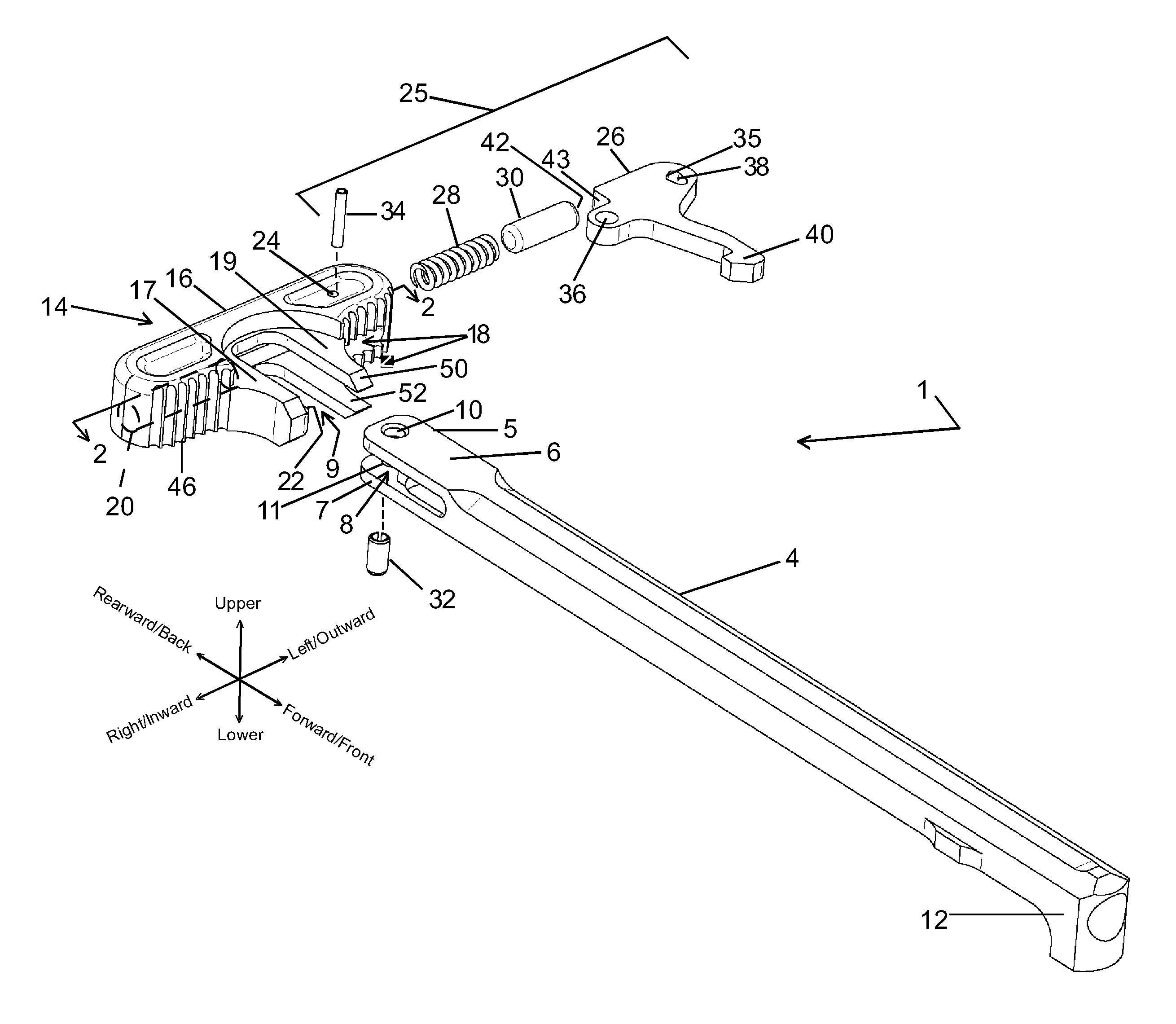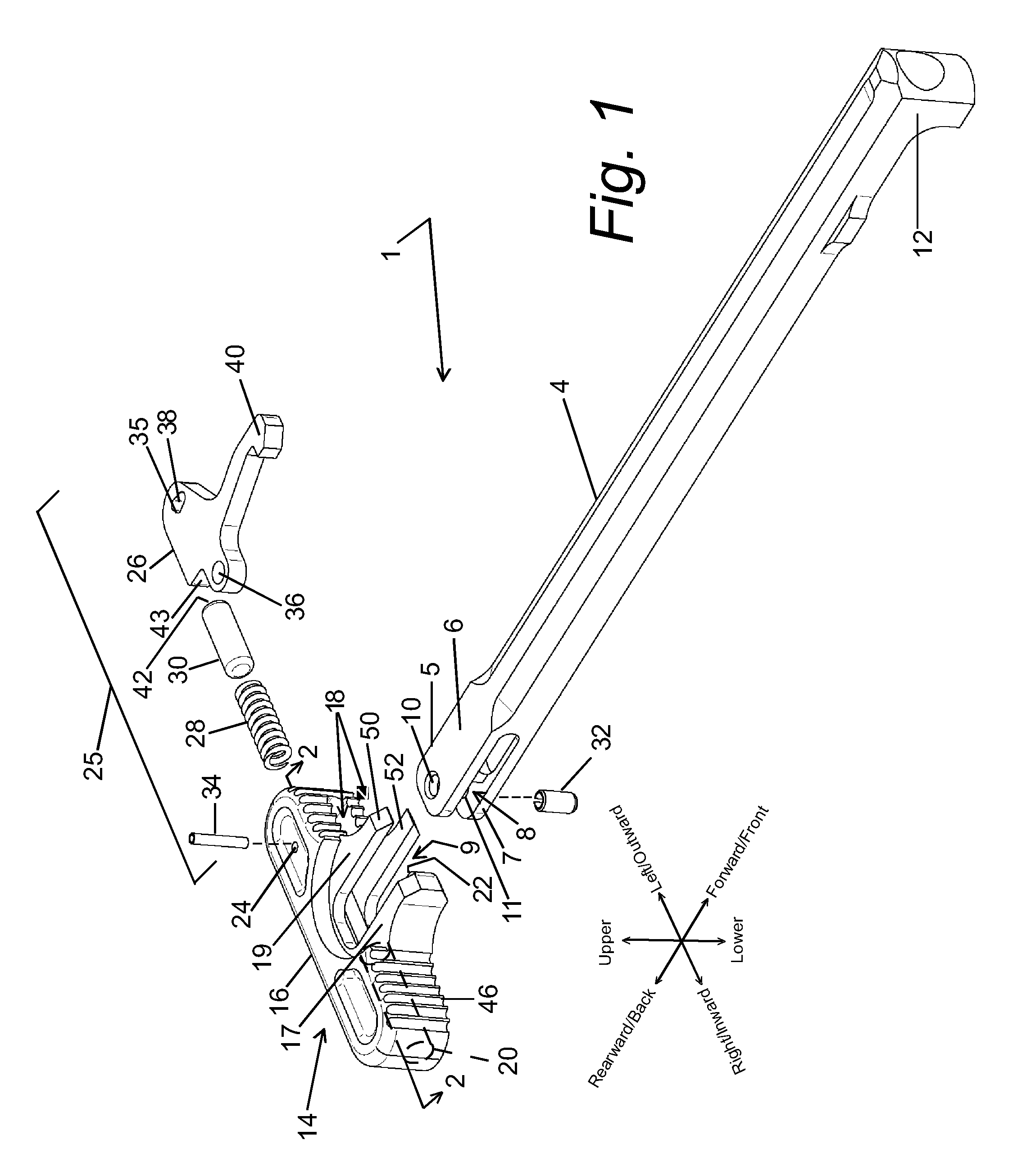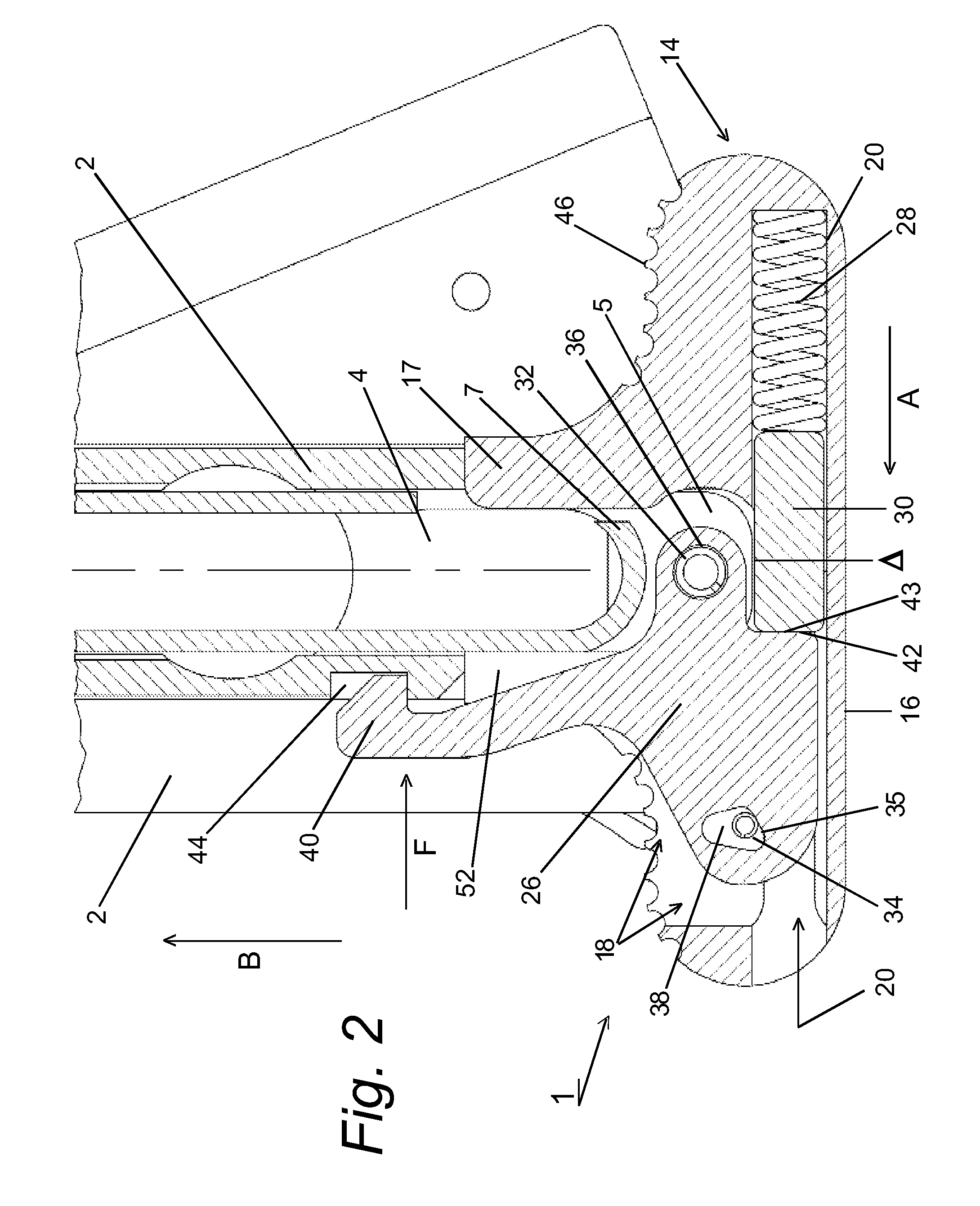Ambidextrous charging handle for firearm
a charging handle and firearm technology, applied in the field of firearms charging handles, can solve the problems of inefficiency of triangular plan form, never been easy, sure, or efficient for left-handed operators, and difficult to charge or off-side firearms, etc., to improve the tactile gripping surface and grip or grasp the charging handle more positively.
- Summary
- Abstract
- Description
- Claims
- Application Information
AI Technical Summary
Benefits of technology
Problems solved by technology
Method used
Image
Examples
Embodiment Construction
[0026]Referring in detail to FIG. 1 an ambidextrous charging handle 1 consists of central shaft 4, oblong handle 14, and latch assembly 25 that consists of latch 26, spring 28, biasing pin 30, and major and minor pivot connectors 32, 34. The central shaft 4 comprises an elongated portion terminating in body 6 having a transverse horizontal slot 8 machined through the body at the proximal end of the central shaft to form upper and lower tangs 5, 7. At the proximal end of the central shaft a vertical bore hole 10 is located through both upper and lower tangs 5, 7 of the body 6. At a distal end of the central shaft 4 a bolt hook is provided to engage a bolt carrier (not shown) located within upper receiver 2, as seen in FIG. 2. The oblong handle 14 has a cross bar section 16, a horizontal slot 18 machined partially therethrough and a cylindrical bore recess 20 that extends horizontally through the left hand side of the oblong handle and terminates within the right hand side of the oblo...
PUM
 Login to View More
Login to View More Abstract
Description
Claims
Application Information
 Login to View More
Login to View More - R&D
- Intellectual Property
- Life Sciences
- Materials
- Tech Scout
- Unparalleled Data Quality
- Higher Quality Content
- 60% Fewer Hallucinations
Browse by: Latest US Patents, China's latest patents, Technical Efficacy Thesaurus, Application Domain, Technology Topic, Popular Technical Reports.
© 2025 PatSnap. All rights reserved.Legal|Privacy policy|Modern Slavery Act Transparency Statement|Sitemap|About US| Contact US: help@patsnap.com



